Visit the canal, enjoy the beautiful scenery, taste the culture … A new chapter on the flowing world heritage.
China’s famous world cultural heritage — — The Grand Canal is a great water conservancy project created by the ancient people of China. It consists of three parts: the Beijing-Hangzhou Grand Canal, the Sui-Tang Grand Canal and the East Zhejiang Grand Canal. It starts from Beijing and Tianjin in the north, reaches Jiangsu and Zhejiang in the south, and spans eight provinces of Beijing, Tianjin, Hebei, Shandong, Henan, Anhui, Jiangsu and Zhejiang. It is the north-south traffic artery in ancient China.
In 2019, the Outline of Cultural Protection, Inheritance and Utilization Planning of the Grand Canal was promulgated, and eight provinces along the Grand Canal were deployed to promote the construction of the Grand Canal National Cultural Park. At present, 73 key projects along the route are progressing smoothly, and related museums, cultural parks and sites have achieved initial results. The ancient canal is showing new vitality.
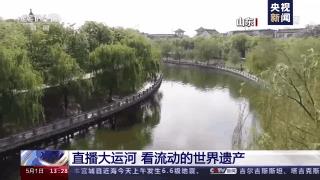
Beijing Section of the Grand Canal: Inheriting History and Creating the Future
The history of the Grand Canal in Beijing can be traced back to Yongji Canal dug in Sui Dynasty. After the water source project of Tonghui River was implemented in Yuan Dynasty, the Beijing-Hangzhou Grand Canal was connected. In the Ming and Qing dynasties, the Grand Canal route of the Yuan Dynasty was basically followed. But later, due to the diversion of the Yellow River and the development of railway transportation in history, the Grand Canal gradually turned from prosperity to decline. However, it is undeniable that the political, economic and cultural exchanges linked by the Grand Canal have become a spectacular and brilliant page in the history of Chinese civilization. Now, the Beijing section of the Grand Canal is full of vitality.
The Beijing section of the Grand Canal takes Baifu Spring and Yuquanshan Springs as water sources, pours into Kunming Lake of the Summer Palace, passes through the long river, introduces Shichahai, passes through the old Yuhe River and Tonghui River, and flows into the North Canal. Among them, Tonghui River and Tongzhou section of the North Canal are all rivers of the Beijing-Hangzhou Grand Canal. Relying on the Grand Canal, the development of cultural belt, ecological belt and tourism belt is on the rise.
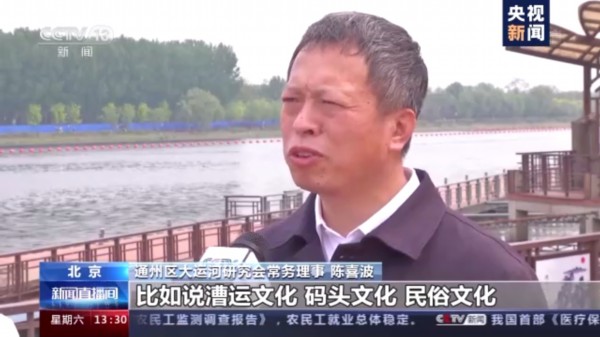
Chen Xibo, Executive Director of Tongzhou Grand Canal Research Association:From the perspective of the Grand Canal, it contains many cultures, such as water transport culture, dock culture, folk culture, and many landscape cultures, which are too numerous to list. These cultures are displayed on both sides of the canal, which is very conducive to giving full play to the cultural inheritance function of the grand canal.

At present, Beijing is accelerating the construction and protection of the Grand Canal National Cultural Park, which is based on the canal water system, linked with the canal culture and integrated with natural ecology and social and economic factors.
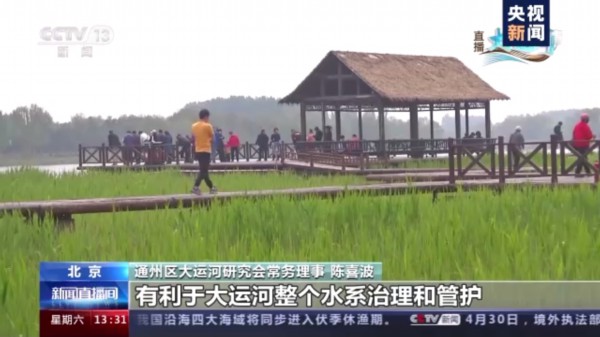
Chen Xibo, Executive Director of Tongzhou Grand Canal Research Association:Cultural heritage can be better protected, and the splendid Millennium Canal culture can be displayed, which is conducive to the management and protection of the entire water system of the Grand Canal, making the water on both sides of the strait clearer, the trees greener and the sky bluer, and also conducive to the development of cultural tourism industry on both sides of the strait. The canal will live. Because we can not only understand the culture, but also feel the customs on both sides of the Grand Canal through cultural tourism.
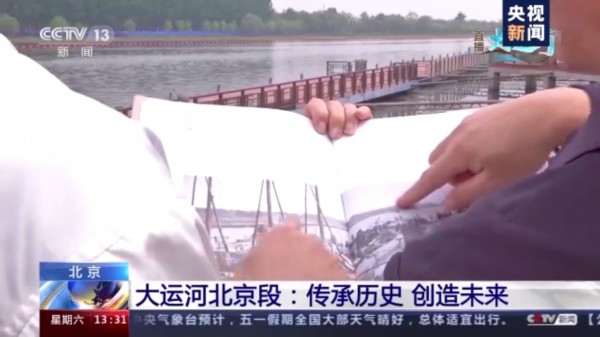
Since 2017, a number of landmark projects have been launched in Beijing: the retreat and renovation of sites along the canal, the comprehensive management of rivers such as the Xiao Taihou River, the establishment of a national 5A-level scenic spot in Tongzhou Grand Canal, and the navigation of cruise ships in Tongzhou section of the North Canal for 11.4 kilometers.
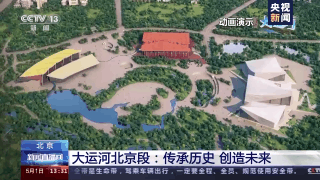
Near the old canal road, three new cultural landmarks — — The Grand Canal Museum, Theatre and Library will be built into a Beijing Grand Canal National Cultural Park with capital standards, Beijing characteristics and the weather of the times.
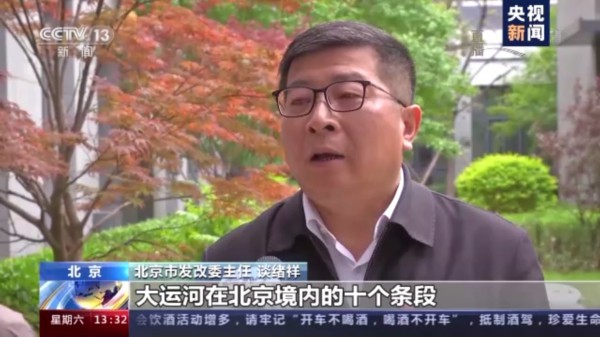
Tan Xuxiang, Director of Beijing Municipal Development and Reform Commission:Up to now, the monitoring of the Grand Canal in Beijing has been completed for ten sections, four lakes and twenty-eight sections, and the water environment quality has reached the requirements of the water environment functional zone. The cultural protection along the Grand Canal has also been strengthened, and the protection and utilization of a number of historical sites and remains have been fully launched. So far, the first phase of the Beijing section, 11.4 kilometers, has been completed, and the second phase will be completed in June this year, thus promoting the perfect integration of culture, tourism and the city in the Grand Canal Cultural Park. In the next step, we will strive to improve the ecological, cultural and environmental pattern of the Grand Canal, making it a symbol of the high-quality development of the sub-center and a green paradise for the happy life of ordinary people.
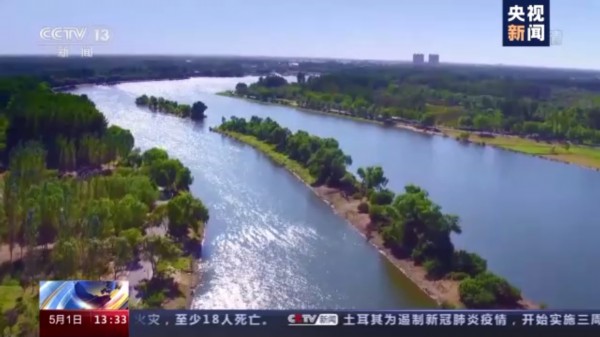
A new chapter on the context of the Millennium Canal.
The Grand Canal is a great project created by China in ancient times, and it is also a cultural symbol of China with extensive influence in the world. Beijing is accelerating the construction of the Grand Canal National Cultural Park. During the May Day period, Tongzhou Grand Canal Forest Park became a popular place for citizens to go on holiday.
Headquarters reporter Wang Shengdong:I am now in the Grand Canal Forest Park. According to past experience, the park authorities estimate that the number of visitors here may reach about 300,000 during the May Day holiday. It can be said that the Grand Canal Forest Park has become a good place for foreign tourists and Beijing residents to spend their holidays. The river section where I am located is also a part of the Grand Canal National Cultural Park under construction in our country, and now it belongs to Tongzhou section of Beijing.

A river: the cruise ship will sail soon at the end of June
Among all the familiar sections of the Grand Canal, Beijing has two sections, one is Tonghui River, and the other is Tongzhou Section of the North Canal.
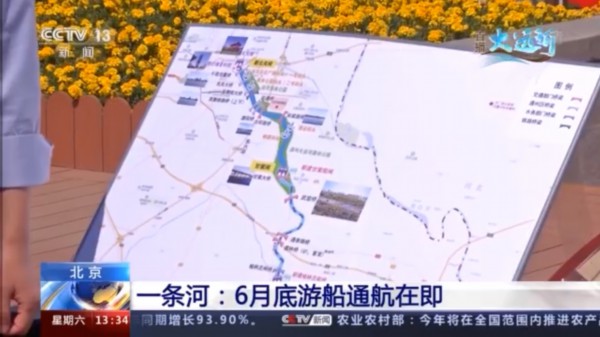
Today, the first thing I want to introduce is a river. The entire Tongzhou section of this river is 41 kilometers. It is necessary to complete the navigation of the whole line of cruise ships by the end of June this year. This is a prosperous time that many people have been looking forward to for many years, because the existing river section is only 11.4 kilometers, which can meet the needs and experiences of more people to visit the canal culture after the whole navigation.
This river is divided into two parts, but after navigation, there will be three modes of sightseeing: one short, one long and one night sailing.
Scenery all the way: Tongzhou Grand Canal is creating a national 5A scenic spot.
Now, at the starting point of the North Canal, that is, the intersection of the five rivers, there are familiar scenic spots of three temples and one tower, as well as the Tongzhou Grand Canal, which is connected in series by the Canal Park and the Grand Canal Forest Park. At present, a national 5A-level scenic spot is being created.
A Fan: Witness of Water Transport Culture

You can see the symbols on this fan in the picture above. It is very strange. The original and copy of the fan are now quietly kept in Tongzhou Museum. This fan is an important witness to the canal water transport culture. In the Ming and Qing Dynasties, in order to ensure the safety of transporting the bridge from the south to Beijing, a non-official and non-civilian organization was derived. The personnel in the organization were called grain brokers, who checked the quality of the bridge. If relevant officials found that there was a problem with the quality of grain, they could check the responsibility through the secret symbols drawn on the grain bags by these brokers. So this fan was also called the QR code or barcode at that time.
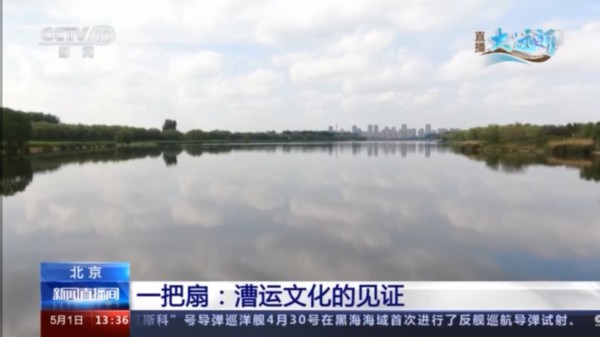
Such a traceability system can be said to be an early traceability system in our country at present.
One line: 17 sites have been retired for repair and protection.
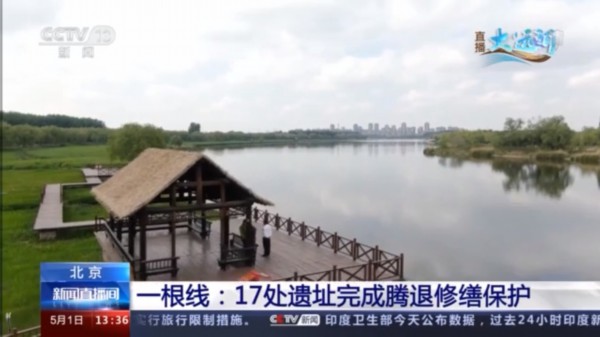
All large-scale landscape sites and sites along the canal have been properly protected, including 17 heritage sites and sites such as Baifuquan, manjuji and Baliqiao, which have been cleared, repaired and protected.
A feast: A number of Grand Canal cultural signs will appear.
Along the Grand Canal, there are not only the wisdom of our ancestors, but also the achievements of today’s people. Now three new cultural landmarks are about to rise. Now they are under intensive construction, and the museums, theaters and libraries in Tongzhou will become new landmarks in the future.
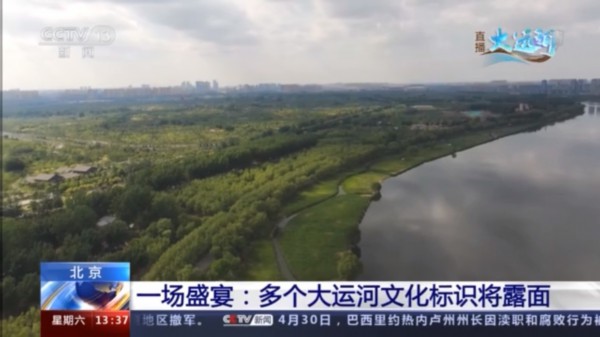
In addition, people are familiar with the digital experience such as the champion cultural exhibition, the map of the Luhe River, and even the workshops of various intangible products, which are now spread out on the banks of the canal.
Tianjin Section of the Grand Canal: Ecological Improvement and Cultural Continuation
As an important transportation hub of the Grand Canal, Tianjin is known as the "city carried by the Canal". The formation, development and prosperity of Tianjin city are closely related to the Grand Canal.
The Tianjin section of the Grand Canal starts from Muchang Gate in wuqing district in the north and ends at Jiuxuan Gate in Jinghai District in the south, with a total length of 182.6 kilometers, including North Canal, South Canal, Haihe River and Ziya River.
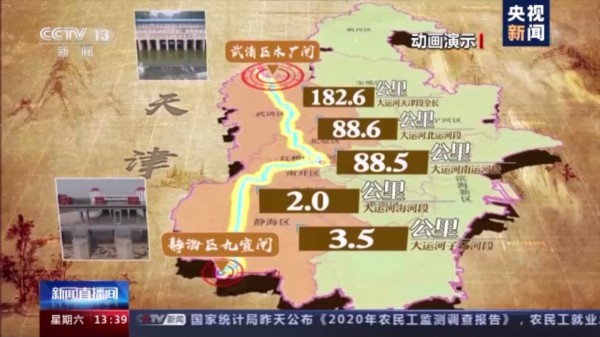
According to the distribution of river courses and heritage resources, wuqing district, Beichen District, Hebei District, Hongqiao District, Nankai District, Xiqing District and Jinghai District in Tianjin are the core areas where the Grand Canal flows.

The tourism resources on both sides of the Grand Canal are rich and diverse, with six main categories, including biological landscape, ruins, buildings and facilities, and a total of 275 resource products, among which the types of buildings and facilities account for the highest proportion.

Follow the aerial camera from the birthplace of Tianjin — — Sanchahekou started to set out, passing through many historical and cultural blocks such as Laochengxiang, Guwen Street, Juyi Street and Haihe River. Beiyang Garden and Wenjin Garden, which have just been completed in recent two years, rely on canal resources to create an ecological landscape for the people to go out and see the scenery, enjoy flowers in four seasons and walk into the forest.
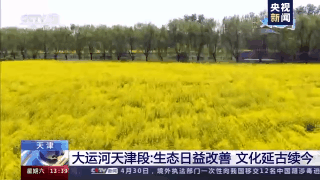
Following the aerial camera to wuqing district, Tianjin, the green and golden eyes add gorgeous colors to the canal this season.

Yang Longyue, Tianjin wuqing district Water Affairs Bureau:We are now located in an important water conservancy hub in Wuqing section of the North Canal, with a total of nine water structures. The one behind me is an important one called the 16-hole sluice, which undertakes the task of flood discharge and drainage during the flood season. In recent years, we have also planted more than 200,000 square meters of landscape plants such as Isatis indigotica and rape flowers on the basis of the original landscape of the North Canal in non-flood season, providing landscape belts for people to enjoy and play.
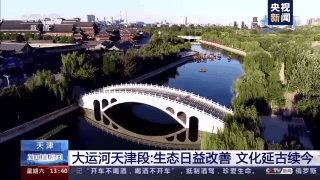
Since the beginning of this year, Tianjin has made every effort to promote the cultural protection, inheritance and utilization of the Grand Canal, and carried out planning, cultural relics protection, project implementation, etc., and established a "1+4" planning system, namely, the Implementation Plan for Cultural Protection, Inheritance and Utilization of the Grand Canal in Tianjin and four special plans for cultural heritage protection, cultural tourism integration development, river water system management and protection, and ecological environment protection and restoration. The cultural protection, inheritance and utilization of the Grand Canal has changed from top-level design to full implementation stage.
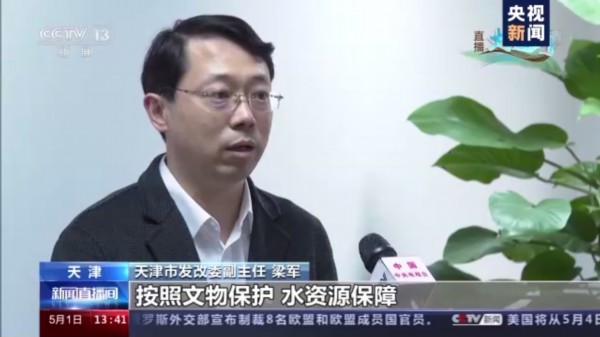
Liang Jun, Deputy Director of Tianjin Development and Reform Commission:According to the protection of cultural relics, water resources protection and ecological restoration along the river, there are 9 categories and 51 key projects, with a total investment of 31 billion yuan. In the next step, Tianjin will adhere to one policy, pay attention to one map as a whole, highlight the protection of cultural relics, ecology, rivers, and accelerate the navigation of tourism in Beijing, Tianjin and Hebei.
Enjoy the charm of the canal by painting the ancient town in New Year.
The most distinctive section of the Grand Canal in Tianjin — — Xiqing section of the Grand Canal, where the Yangliuqing Grand Canal National Cultural Park has been started.
Headquarters reporter Wang Xiaopei:I am now located in the Xiqing section of the Grand Canal, with a total length of more than 30 kilometers, of which 16.5 kilometers is a world cultural heritage, and the ancient town of Yangliuqing is on both sides of the canal. Just now, I also experienced a circle by boat, and the scenery on both sides of the strait in the water is also unique. On the north side of the canal is the most prosperous amorous feelings block in Yangliuqing town, next to the Shijia Courtyard, a national 4A-level scenic spot known as the "first house in North China". On the south side of the canal is the Yangliuqing Grand Canal National Cultural Park, which was officially launched in 2019.
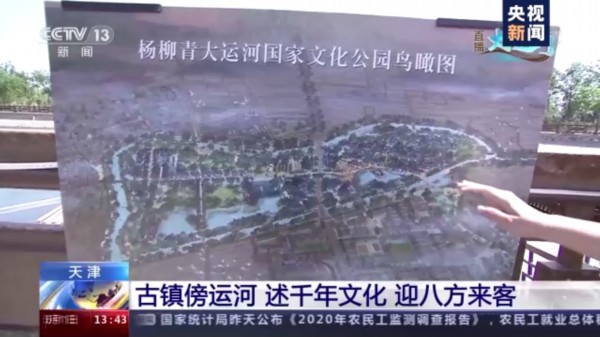
The Yangliuqing Grand Canal National Cultural Park covers an area of more than 2,800 mu, which is divided into three sections: a famous historical town, a treasure island and a cultural town. The core part is the treasure island, which is also the main part of planning and construction at this stage.
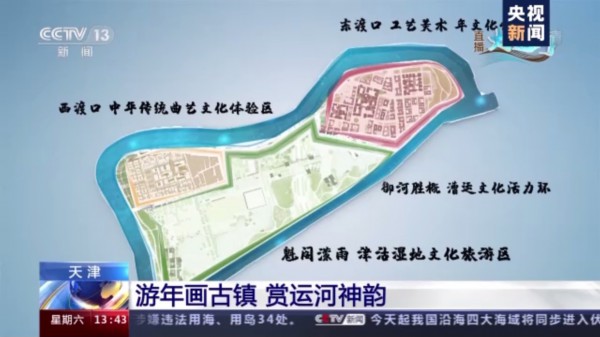
Yuanbaodao is divided into three areas: Jingu Wetland Cultural Tourism Zone, Chinese Traditional Quyi Cultural Experience Zone and Nian Cultural Experience Zone, as well as the vitality ring of water transport culture.

The entire Yangliuqing Grand Canal National Cultural Park, when planning, has three adherences.
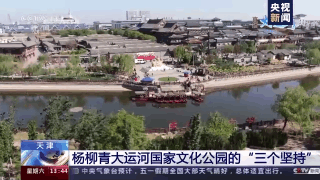
First, insist on planning before moving. That is to solve the problem of "how to plan and what to build". In fact, before you see this planning version, there are five versions planned and designed by famous designers from all over the country and even the world. The final version can be said to be the most suitable for Yangliuqing, Tianjin and the Grand Canal.
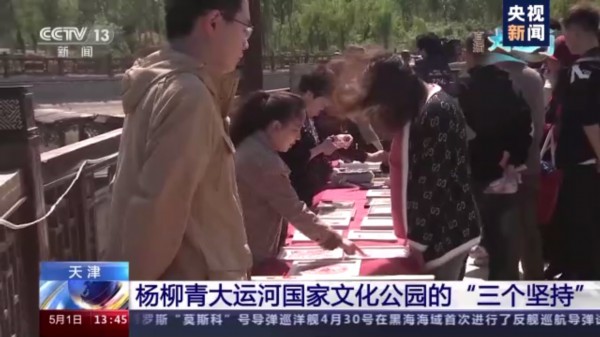
The second is to adhere to cultural guidance and solve the problem of "how to protect and inherit what". The biggest charm of Yangliuqing Grand Canal National Cultural Park is the Millennium culture behind it. In addition to Yangliuqing New Year pictures, there are also a series of national non-legacy projects such as paper-cutting and kites. In the future, the China New Year Picture Museum will be planned and built here, giving full play to Yangliuqing’s New Year Picture culture, water transportation culture and rushing to camp culture. At the same time, according to the principle of "preserving the past, inheriting the past, promoting the past and using it", we will learn from the exhibition method of Riverside Scene at Qingming Festival to realize the reappearance of historical scenes. That is to say, the buildings repaired here will also show a bright breeze in the future.
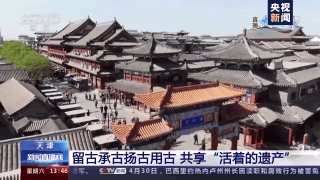
The third is to adhere to the integration of cultural tourism and solve the problem of "how to operate and what to develop". For example, in view of the famous historical town plate, the method of "reactivation" is adopted to retain more than 800 existing old houses, to carry out historical and cultural restoration, to develop special tourism, special homestays and other formats, and to introduce market capital, focusing on building canal water street, intangible experience, Chinese time-honored brands and other formats, so as to turn this place into a tourist attraction and a cultural punching place.
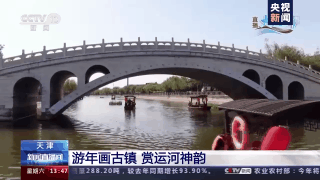
Tianjin is a city born and prospered by rivers. Everyone in Tianjin has learned the warmth and perseverance of water, and also has the obligation and responsibility to protect, inherit and make good use of the Grand Canal and its long-standing culture. The designers and managers of the National Cultural Park also have a small wish, that is, to make people all over the world yearn for celebrating the China Year of the Lunar New Year in Yangliuqing, so that tourists from Beijing, Tianjin and Hebei can have a full moon weekend in Yangliuqing and enjoy the living heritage here.